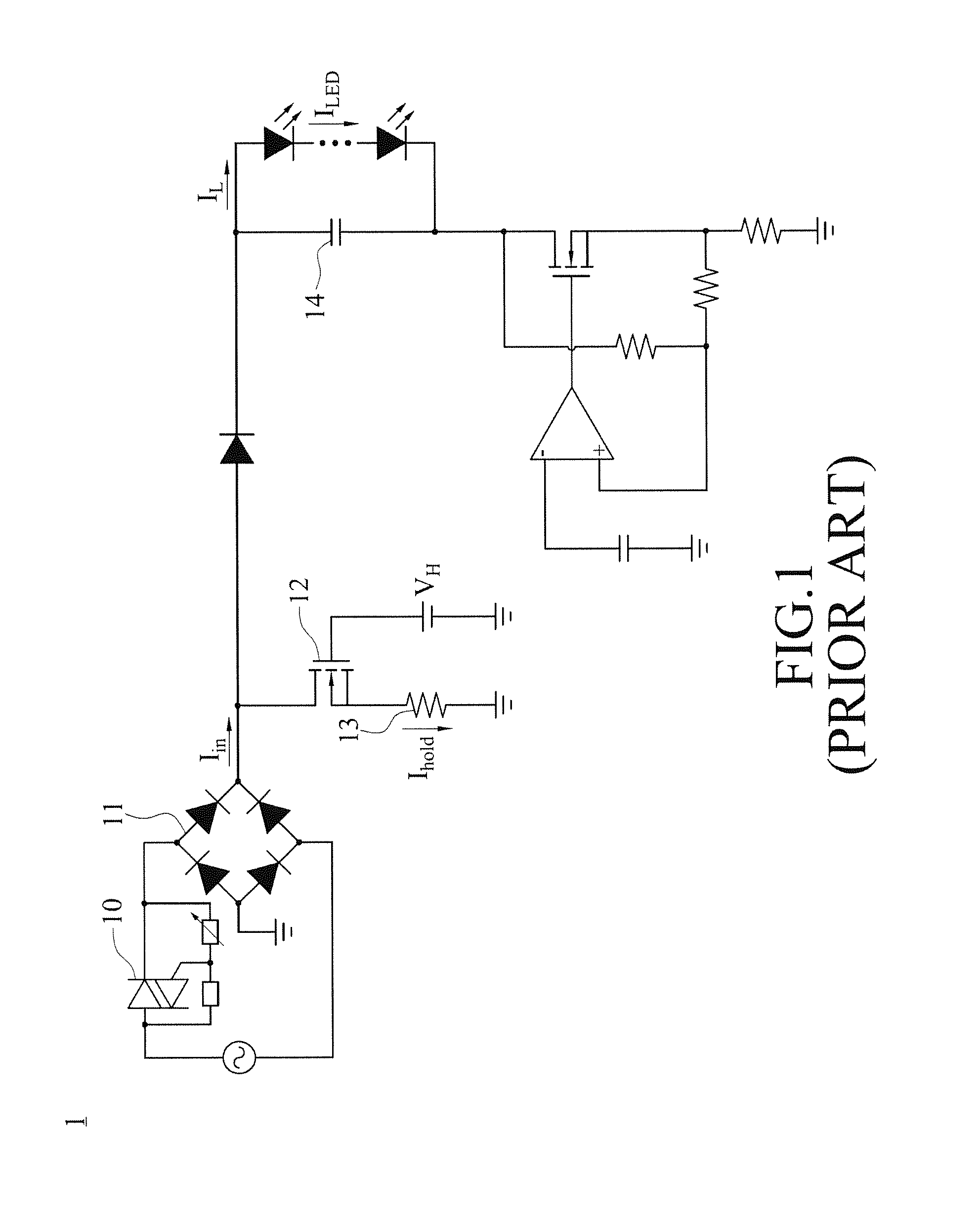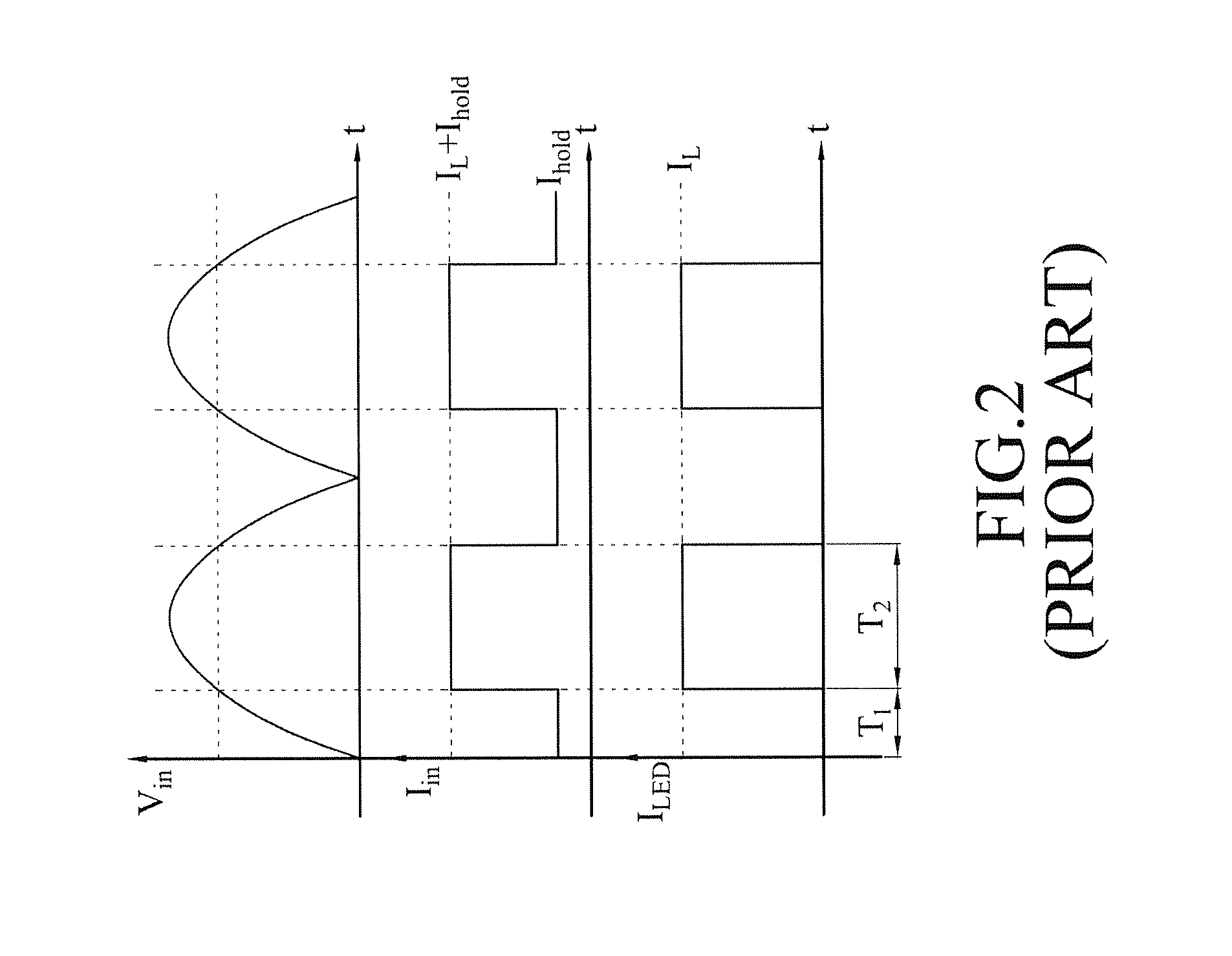Variable power dimming control circuit
a control circuit and variable power technology, applied in the direction of electric variable regulation, process and machine control, instruments, etc., can solve the problems of consuming unnecessary power, affecting the operation quality of the driver circuit, and unable to operate normally in the triac, so as to reduce the total heat energy, facilitate the heat dissipation effect, and avoid unnecessary power consumption
- Summary
- Abstract
- Description
- Claims
- Application Information
AI Technical Summary
Benefits of technology
Problems solved by technology
Method used
Image
Examples
Embodiment Construction
[0021]The technical content of the present invention will become apparent with the detailed description of preferred embodiments and the illustration of related drawings as follows.
[0022]With reference to FIGS. 3 to 5 for block diagrams of two implementation modes and a circuit diagram of a preferred embodiment of the present invention respectively. As shown in the figures, a variable power dimming control circuit 2 is installed at a light board module (not shown in the figures) of a lamp for converting a voltage power of an external power supply 3 to drive and linearly adjust the illumination brightness of a plurality of LEDs 4, and the LEDs 4 are electrically connected in series or in parallel and installed on the light board module. The variable power dimming control circuit 2 comprises a dimming unit 20, a rectification unit 21, a dimming stabilization unit 22, a driving unit 23 and a control unit 24, and the dimming stabilization unit 22 comprises a constant current device 220 ...
PUM
 Login to View More
Login to View More Abstract
Description
Claims
Application Information
 Login to View More
Login to View More - R&D
- Intellectual Property
- Life Sciences
- Materials
- Tech Scout
- Unparalleled Data Quality
- Higher Quality Content
- 60% Fewer Hallucinations
Browse by: Latest US Patents, China's latest patents, Technical Efficacy Thesaurus, Application Domain, Technology Topic, Popular Technical Reports.
© 2025 PatSnap. All rights reserved.Legal|Privacy policy|Modern Slavery Act Transparency Statement|Sitemap|About US| Contact US: help@patsnap.com



